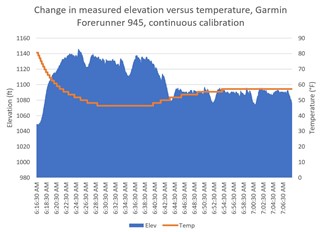I'm trying to understand how elevation works with this watch. I do morning runs in sub-freezing temperatures, and it makes the elevation profile very inaccurate as the watch cools down. From what I can tell, the association is Δ temperature = -Δ elevation.
I purchased the Topo 24K for my region to have better elevation data. Theoretically, the 24K topo maps have much higher resolution elevation data that the watch should be able to benefit from. My assumptions are that it should be given the additional granularity by the Topo 24k maps. What I fear is that the 24K topo map is nothing more than a visual overlay.
Calibrating the Altimeter can be done via DEM. The question is, does the DEM mapping become more granular with the 24K topo maps? I've turned off all auto-calibration of the altimeter during activity to force the watch to use map data for elevation. I'm hoping it uses the Topo 24K map data if my initial assumptions are correct.



